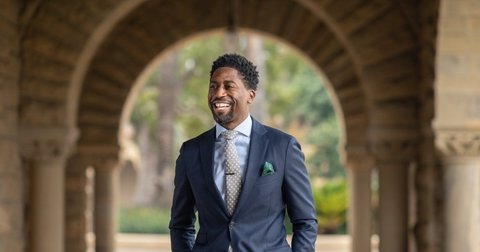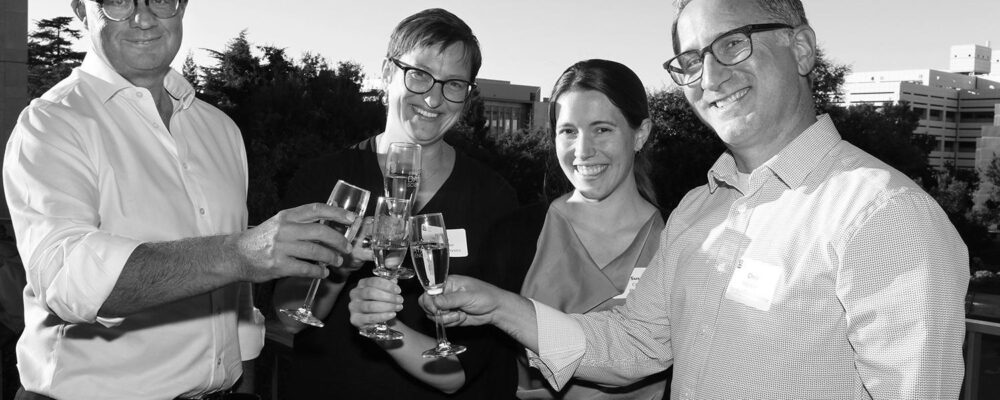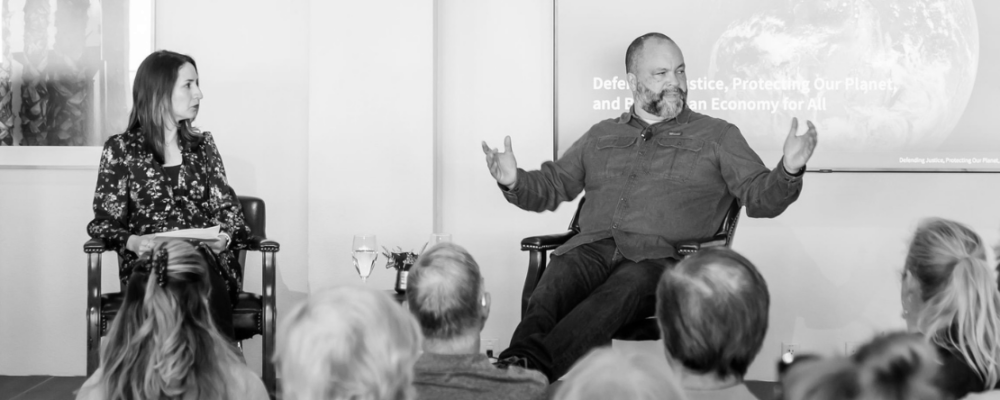If Lerone A. Martin, the faculty director for Stanford’s Martin Luther King, Jr. Research and Education Institute, harbored any doubts about teaching his popular undergraduate course via the Internet to high schoolers in Los Angeles, they vanished when the results of a student survey arrived midway through the semester.
When asked about the class, Between Malcolm X and Martin Luther King, Jr.: Race, Religion, and the Politics of Freedom, three of the students answered:
- “I’ve had great discussions and learned so much more about Malcolm X and MLK than I’ve learned over my entire life. It’s very interesting.”
- “I love this class. It’s almost like this is what my school was missing, a course actually dedicated to the color of people that attend my school.”
- “My favorite parts are seeing Prof. Martin being passionate, telling us these great people’s stories that are not so much in the spotlight. I feel that I relate more with Malcolm and Martin at this point.”
Martin, the Martin Luther King, Jr. Centennial Professor in the School of Humanities and Sciences, is among the first faculty members to work with Stanford Digital Education to adapt a Stanford undergraduate course for a younger group of learners. His course, which more than 90 Stanford students took a year ago, is now underway in classrooms in seven Title I high schools in the Los Angeles Unified School District. (Schools qualify as Title I if 40 percent or more of students come from low-income households.)
This novel effort in hybrid learning — a combination of recorded lectures by Dr. Martin, live discussions over Zoom with Stanford teaching fellows and in-person sessions with local classroom teachers — was made possible through Stanford’s collaboration with the nonprofit National Education Equity Lab, which connects a dozen universities, including Stanford, to more than 300 Title I high schools in 29 states.
The high school students who successfully complete Dr. Martin’s course will earn credits from their high school and from Stanford, just as high school students in other Ed Equity Lab courses may earn credits from Stanford or other schools giving the courses as well as from their high schools. Between Malcolm X and Martin Luther King, Jr. is one of five dual enrollment courses that Stanford Digital Education has helped to develop with Ed Equity Lab.
The course is organized around the question: “How did Malcolm and Martin understand the causes and solutions to racism and inequality?” Students answer that question by examining the two men’s personal biographies, speeches, writings, FBI files, news coverage, critiques of their leadership and other materials. Martin shared his thoughts on why the topic and curriculum resonate with today’s high school students.
* * *
Question: Why target high schools with a course about Malcolm X and the Reverend Dr. Martin Luther King?
Lerone Martin: Malcolm and Martin are great conversation partners for young adults trying to make sense of the world around them. The students explore how these two would speak to the current circumstances they find themselves in. Both men diagnosed the causes of injustice and offered solutions to the failures of American democracy. They are historical icons for their engagement in this struggle.
It also helps that Malcolm’s and Martin’s respective journeys as young adults are very relatable. Both encountered tremendous obstacles that shaped their pursuits for justice, though they came from very different backgrounds. Malcolm grew up in poverty, amid social chaos, dropping out of school at age 15 and later educating himself while serving time in prison. Martin grew up privileged, skipping two grades in high school and enrolling in Morehouse College at 15. I’m writing a book about MLK’s adolescence; his struggle to discover purpose in life is a struggle I believe many young adults experience.
Q: You taught an in-person version of this course a year ago to Stanford undergraduates. How does that course compare with the course that the high school students are taking?
LM: The course being offered in high schools is largely the same, except it is remote. High school students are floored, flattered, and excited to know that they are doing the same work as Stanford undergrads. These kids are 16, 17, and 18 years old, and it’s hard work. They are taking a course at Stanford. They should be applauded.
While the material is the same, the high school course is distinguished from what I taught on campus in two other ways, in addition to being remote. We provide some of the high school students with support to improve their writing. We also have expanded the role of the teaching fellows (TFs) — they are essential to the course’s success. The TFs, who often are Stanford students or alums, meet with the high school students synchronously once per week. They review the readings, lead discussions over Zoom and provide robust feedback to students on their ideas. They collaborate with the local classroom teacher at each high school as well as working closely with course administrators at Stanford and with me.
Q: I understand that you have personal experience with dual enrollment — a course like this one in which students can earn both high school and college credits.
LM: I am a first-generation college student. I took a dual enrollment course in high school. It changed my life. It helped to convince me that I could indeed succeed in college. It changed the way I viewed myself. It expanded my world and what I believed was possible.
Q: Any thoughts about the course’s future?
LM: I have two items on my bucket list. I would like to visit students in person during the course, and I would like to bring them to campus for a summer intensive experience. I am hopeful that I may be taking a step toward achieving the first item next month. If all goes according to plan, I’ll be flying to Los Angeles to lead a discussion with the students in the Westchester Enriched Sciences Magnets classroom. It will be great to meet them face to face.
Q: Is there anything about the current political climate that led you to offer this course?
LM: This course is very important as communities across the country ban books and prohibit discussions regarding race in American history. History is a powerful weapon. It helps to explain the present and can help inform our efforts to shape a better future. Robbing students of history, no matter how unpleasant, circumscribes how we understand the world and our options for making it better. Introducing students to Malcolm and Martin as conversation partners will help students understand racism in American history and how to talk about and cultivate the ability to have conversations across difference.
Jonathan Rabinovitz is communications director for Stanford Digital Education.
Follow Stanford Digital Education: Sign up for Stanford Digital Education’s quarterly newsletter, New Lines, to learn about innovative research and teaching in digital spaces, as well as our team’s initiatives. Subscribe to New Lines.
“Stanford University, officially Leland Stanford Junior University, is a private research university in Stanford, California. The campus occupies 8,180 acres, among the largest in the United States, and enrols over 17,000 students.”
Please visit the firm link to site






